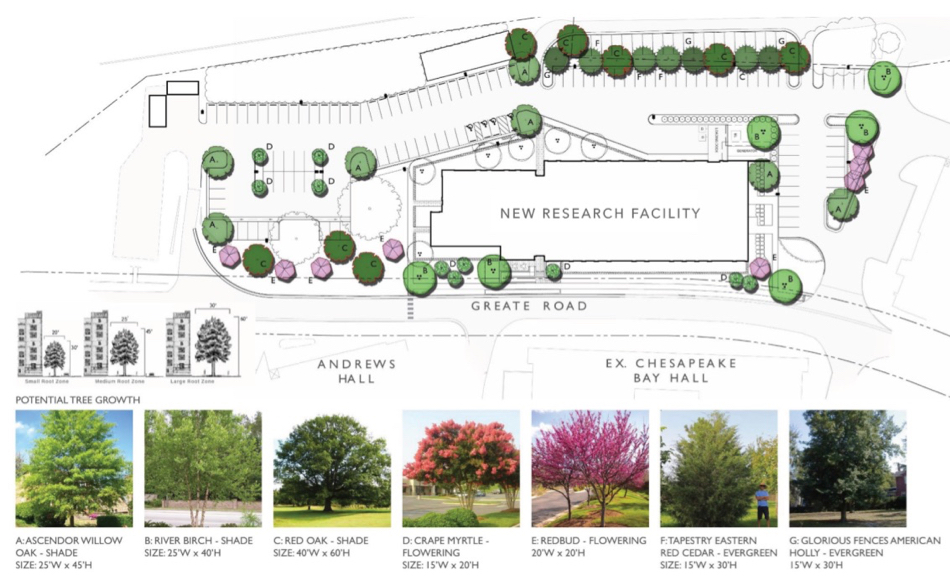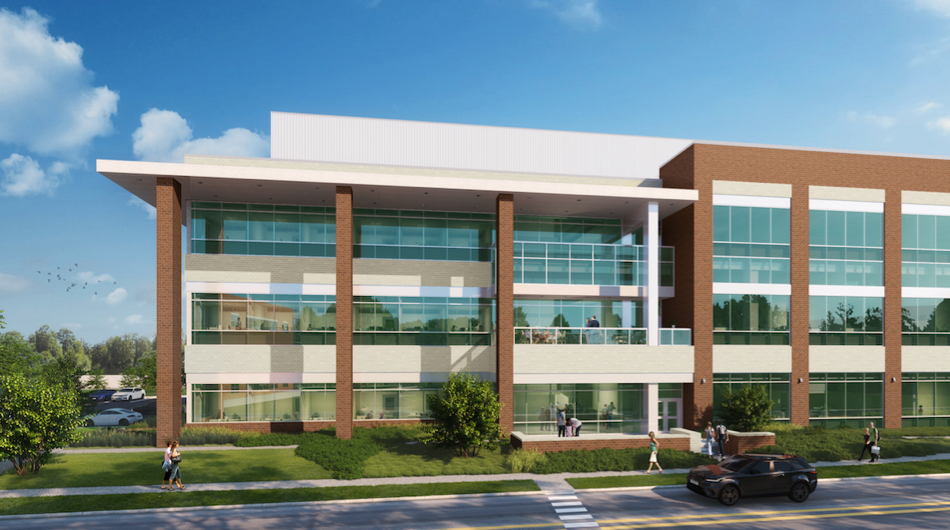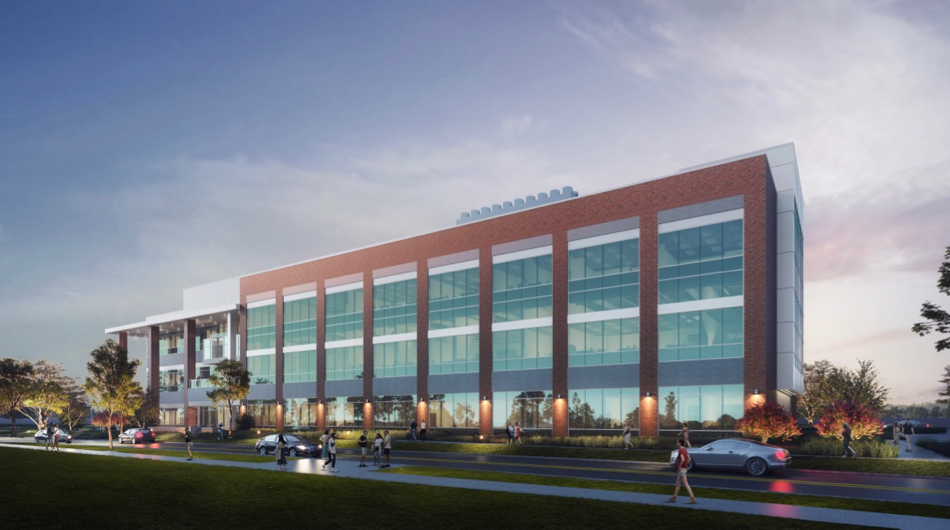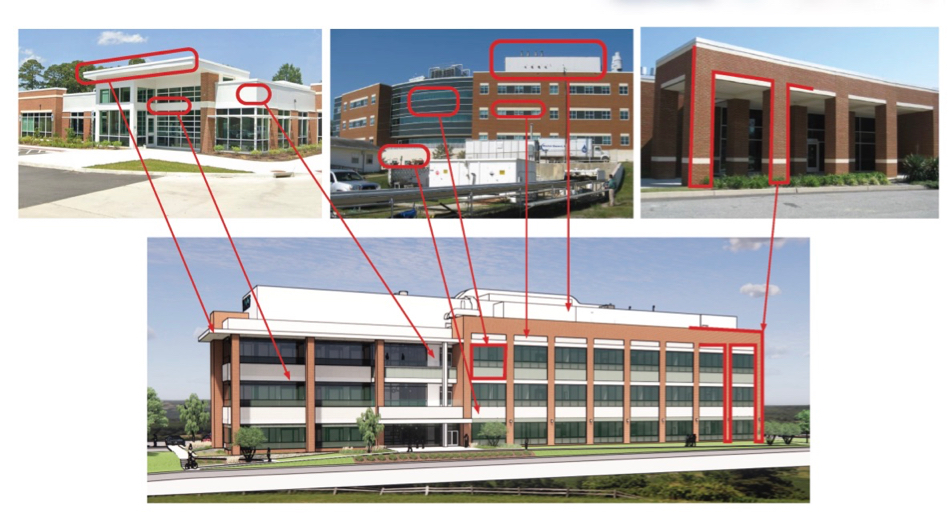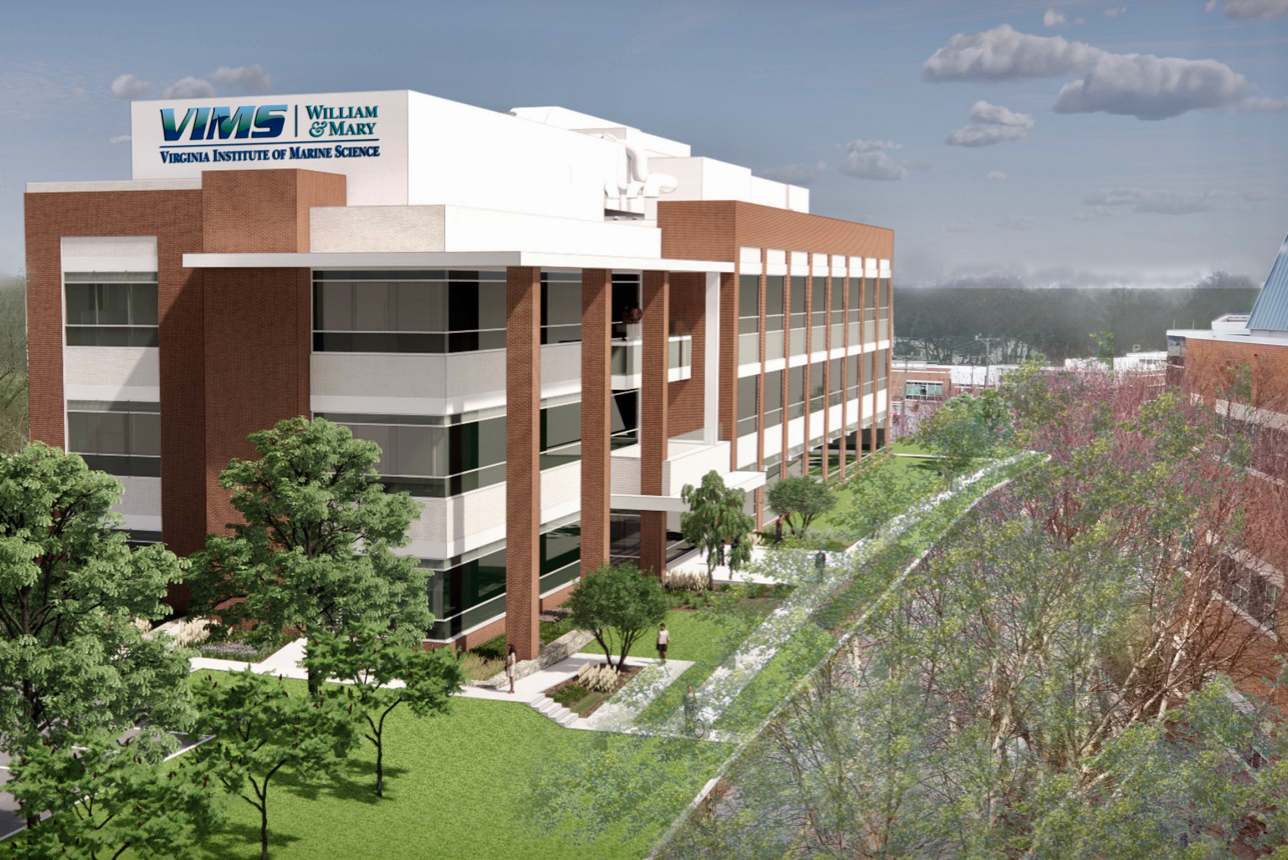VIMS begins preparing for new research building
Motorists on Route 17 through Gloucester Point will notice that preparation has begun for a new research building on the campus of the Virginia Institute of Marine Science.
The 3-story, 68,240 square-foot structure will provide a new home for faculty, staff, and students from all four academic departments at VIMS: Aquatic Health Sciences, Biological Sciences, Fisheries Science, and Physical Sciences. Funding for the $74M building was provided by the Commonwealth of Virginia and represents the culmination of a design process that began in 2016.
Dr. Derek Aday, VIMS Dean & Director, says “our new, state-of-the-art research building will provide much needed space to enable our faculty, staff, and students to continue to address emerging challenges in marine systems and coastal communities in the Commonwealth and around the nation and world.”
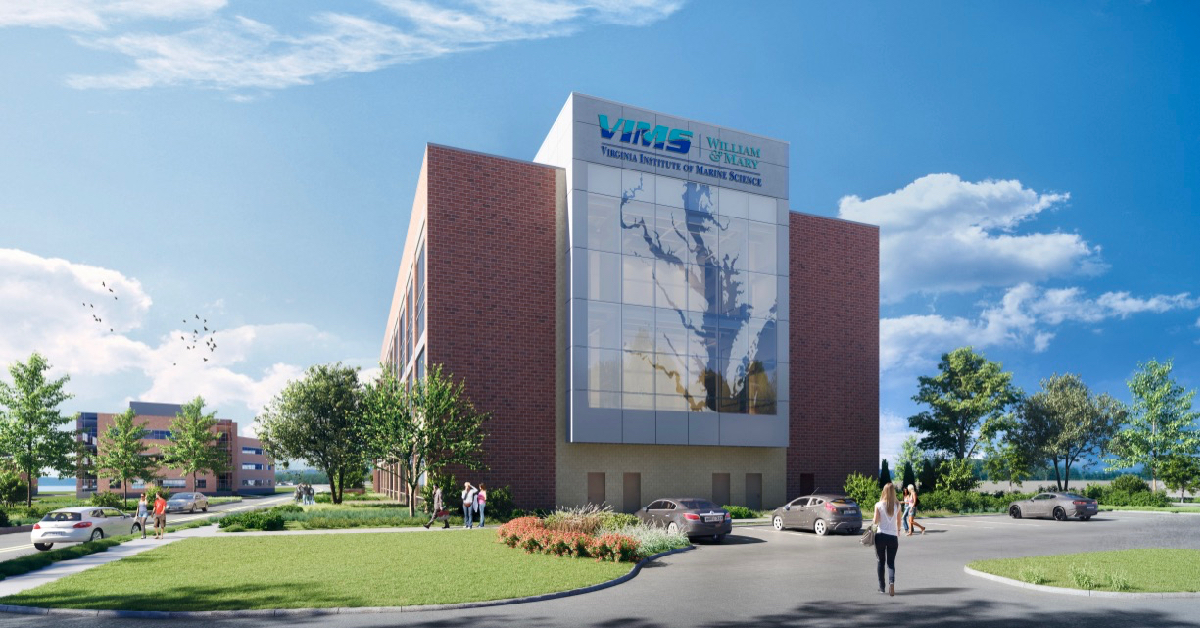
The heart of the building will be devoted to research laboratories equipped with state-of-the-art instrumentation for analyzing environmental samples. Built in a modular fashion to allow for flexibility as research needs change, these labs will reflect current emphases on shellfish health, fisheries genetics, aquatic diseases, harmful algal blooms, marine contaminants, microplastic pollution, microbiology, and plankton ecology. A first-floor teaching lab will allow for hands-on learning using cutting-edge scientific tools.
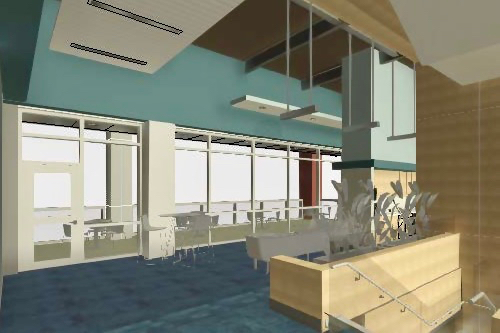
Aday notes that the new labs will reflect the core research areas in VIMS’ most recent strategic plan—ensuring ecosystem health, promoting resilient coastal systems, and providing science for sustainable stewardship of natural resources.
The research labs will house a variety of high-tech equipment, including DNA analyzers, gas chromatographs, mass spectrometers, spectrophotometers, flow cytometer, and an energy dispersive X-ray spectroscope with the imaging capabilities of a scanning electron microscope. Use of these instruments allows VIMS researchers to analyze contaminants known to cause adverse effects to marine organisms even at ultra-low concentrations.
The new facility will allow VIMS researchers to continue to pursue research and research-funding opportunities at the local, state, and national levels. Dr. Mark Luckenbach, Associate Dean of Research and Advisory Services at VIMS, says, “With the past as a guide, we expect that faculty in our new facility will earn about $5M in grants and contracts each year. This research is instrumental in sustaining and protecting the environment, bolstering the marine-based economy, and helping protect human health.” The quoted dollar value represents about a fourth of all the grants and contracts earned by VIMS faculty annually.
The new building—scheduled for completion in 2024—will ultimately replace an existing structure of similar size known as Chesapeake Bay Hall. The current structure will remain in place during construction of the new building due to a lack of “swing space” for its present occupants. Mr. Joseph Martinez, Chief Operations Officer at VIMS, says the new facility will provide overall cost-savings through increased energy efficiency and more reliable mechanical systems. Mr. Dana Snyder, Assistant Director of Facilities Management at VIMS, says “the improved air-handling infrastructure and equipment provides the critical controls needed to conduct our cutting-edge research.”
Environmental sustainability
In line with VIMS’ focus on environmental sustainability, the new building is expected to achieve silver certification under the LEED green-building rating system. As such, it will incorporate elements during both construction and operation to help reduce energy use; protect water resources and ecosystem services; enhance human health; and promote material recycling.
Mr. Mark Brabham, Director of Facilities Management at VIMS, says “LEED evaluates three aspects of project materials: how they’re made, where they originate, and how they get to the site. We’ll receive credit for using recycled materials, locally sourced materials, and sustainably farmed wood products. Our contractor will also help us improve sustainability by diverting from the landfill as much construction waste and demolition debris as possible.”
The focus on environmental sustainability will extend to the surrounding grounds, with plans to landscape using native plants such as switchgrass, serviceberry, winterberry, summer sweet, redbud, river birch, and Eastern Red Cedar. A large map of Chesapeake Bay will greet visitors approaching the north side of the building, while VIMS signage on the south side will greet visitors crossing the Coleman Bridge from Yorktown to Gloucester County.
Once the new building is completed in 2024, VIMS plans to replace the current Chesapeake Bay Hall with a new fisheries science building. Funding for the design phase of that structure has been submitted for consideration in the upcoming state budget cycle.
The new building was designed by Baskervill and will be constructed by Kjellstrom + Lee. Funding was provided through bonds issued by the Virginia College Building Authority. The preliminary archeological study—required before any construction activities take place on the historic grounds of VIMS’ Gloucester Point campus—was conducted by the Center for Archaeological Research at William & Mary. The results of that study will be publicly available once analysis, interpretation, and publication are complete.
